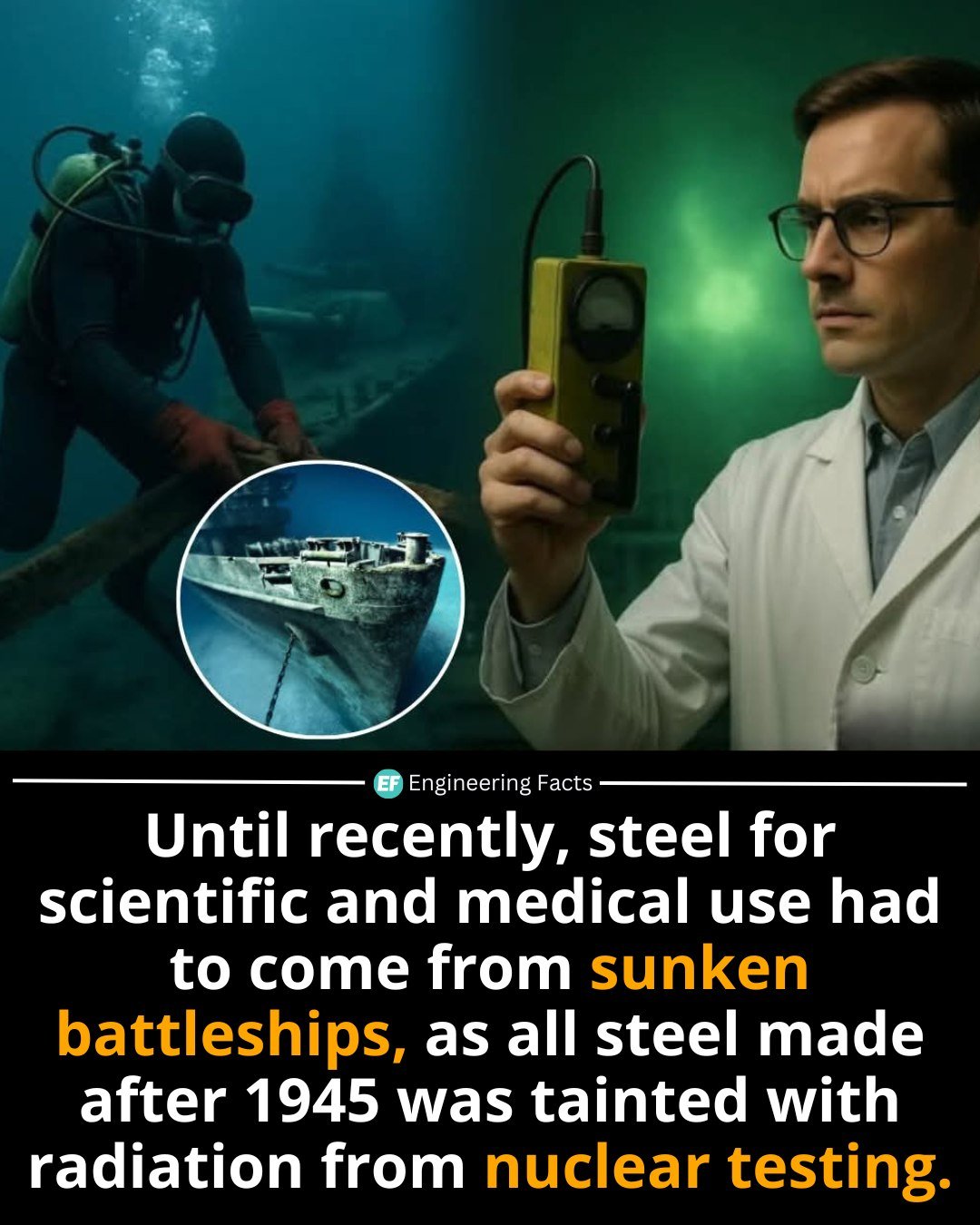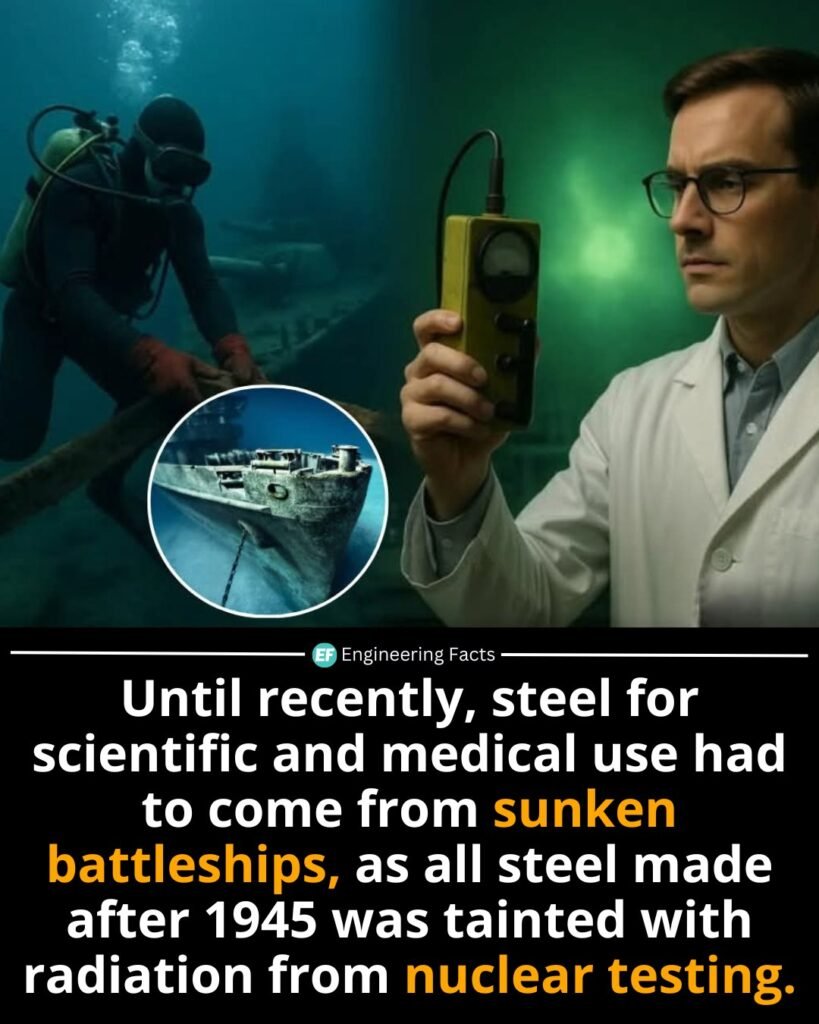[ad_1]
After World War II, atmospheric nuclear tests released radioactive particles that contaminated the air worldwide. Steel produced after 1945 absorbed trace amounts of this radiation during the smelting process due to exposure to airborne fallout.
This posed a problem for ultra-sensitive instruments like Geiger counters, space telescopes, and some medical imaging devices, which required radiation-free materials to function accurately. The solution? “Low-background steel” salvaged from pre-1945 sunken battleships, which had been shielded from contamination underwater.
Ships like Germany’s WWI-era battleship SMS Scharnhorst and the USS Arizona became unexpected sources of prized metal for scientific equipment—turning history’s wreckage into modern research tools.
Today, modern steelmaking techniques and decreased background radiation have reduced this dependence, but low-background steel is still valued for certain precision applications.
,LowBackgroundSteel ,SunkenShips ,NuclearTesting ,ScientificInstruments ,SteelHistory
Stay Connected with NewsRT:
For the latest headlines and urgent updates, visit our Breaking News section. If you want to stay informed about global affairs, our World News page brings you top stories from around the world.
For entertainment lovers, check out our Entertainment category to catch up on celebrity news, movies, and trending shows. Sports fans can follow live scores and in-depth match reports in our dedicated Sports section.
Stay on top of your health with expert insights and wellness tips on our Health page. For the latest financial updates, market trends, and stock analyses, visit our Stock Market section.
Don’t forget to explore our homepage for more top stories, exclusive reports, and real-time news updates curated for you.
